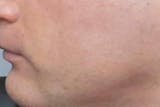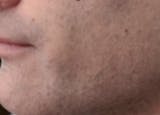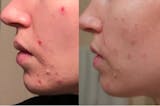Antihistamines, often used for their anti-inflammatory purpose, are useful when the body overproduces histamines or their breakdown is faulty.
Histamines can be controlled through medication or diet. Success will vary based on the local environment, stage of eczema, and individual characteristics.
Introduction
Eczema is a chronic skin condition that affects millions of people worldwide. Eczema flares have symptoms like itchiness, redness, and inflammation.
Antihistamines are among the many available tools that can help with the symptoms of eczema.(THA 2018)
Success with any one tool can vary by person, making sorting through all the options a challenge.
To accelerate finding the right treatment for you, this article aims to provide a comprehensive overview of antihistamines, explaining what they are, how they work, their different types, usage, benefits, and potential side effects.
JUMP TO SECTION:
What Are Histamines In The First Place?
Histamines are crucial compounds produced by the body that serve various functions, including:
Initiating an immune response
Neurotransmission including alertness, and possibly memory processing
Regulating stomach acid levels
When immune cells in your body identify a foreign invader they are sensitive to, they release histamine. Histamine then dilates nearby blood vessels and lowers blood pressure, allowing more white blood cells and specific proteins to enter the area and attack the foreign invader, promoting healing.
As a result, the affected area becomes inflamed—red, hot, swollen, and itchy.
When this inflammation occurs in the nasal area, it leads to the three classic allergy symptoms:
- A runny nose due to fluid release
- Nasal congestion, which is actually swelling of nasal tissues
- Sneezing, which is related to itchiness
Both a runny nose and swelling in the nasal tissue (congestion) are considered "on-target" effects because they facilitate the entry of white blood cells into the area to combat the detected foreign invader.
Why Would You Consider Antihistamines?
There are several reasons why someone might want to use antihistamines for their main, anti-inflammatory purpose:
- The foreign invader the immune system is reacting to is not dangerous. This is the case with bothersome "allergies."
- The body over produces histamines, or produces so much that another bodily system is adversely affected.
- Consumption of excessive amounts of histamines.
- Histamine breakdown is faulty and symptoms persist after they are needed. For some eczema sufferers, this may be the case during the early phase of a flare.(FIS 2012)
- It is possible that antihistamines may support repair of the skin barrier during a flare.(TAY 2021)
What Are Antihistamines?
Antihistamines are medications specifically formulated to counteract the effects of histamine. They function by blocking histamine receptors on target cells, thereby reducing the body's reaction to histamine release.
Antihistamines are available in various forms, including oral and topical treatments, and can be acquired either over the counter or with a prescription.
Types of Antihistamines
There are four known histamine receptors in the body that can be targeted to block histamine activity: H1, H2, H3, and H4. Currently, only experimental medications do target H2 and H4 receptors and H3 receptors are typically used in treating brain disorders.
The majority of familiar antihistamines work through the H1 pathway to block histamine action. H1-antihistamines can be applied topically (to the skin, nose, or eyes) or administered orally (systemically), depending on the specific condition being treated.
First-Generation H1 Antihistamines
First-generation H1 antihistamines have the ability to cross the blood-brain barrier, which often results in drowsiness.(NHS)
Some common examples of these include:
Brompheniramine (Dimetapp, Dimetane)
Chlorpheniramine (Chlor-Trimeton)
Dimenhydrinate (Dramamine, Gravol) – a combination of diphenhydramine and 8-chlorotheophylline
Diphenhydramine (Benadryl)
Doxylamine (Unisom)
Interestingly, the originally off-target effect of drowsiness has now become a primary use for these medications, with many sleep aids incorporating one of these drugs. There are questions around the quality of sleep that is gained from use of these drugs however.(WOL 2016)
For managing allergic conditions and atopic dermatitis, second-generation antihistamines are preferred.(RAN 2018)
Second-Generation H1 Antihistamines
The newer class of second-generation H1 antihistamines does not easily penetrate the blood-brain barrier, making them less likely to cause sedation. However, individual reactions, concomitant medications, and dosage may still increase the likelihood of experiencing sedative effects.
Examples of second-generation drugs include:
Cetirizine (Zyrtec)
Fexofenadine (Allegra)
Levocetirizine (Xyzal)
Loratadine (Alavert, Claritin)
The Oral Form of Antihistamines
Oral antihistamines, available in pill or liquid form, are absorbed into the bloodstream and provide systemic relief for symptoms throughout the body. Generally, they can be purchased over the counter or obtained with a prescription, and come in various formulations, such as first- and second-generation antihistamines. The latter usually cause less drowsiness and have fewer side effects.
The Topical Form of Antihistamines
Topical antihistamines are applied directly to the affected skin areas in the form of creams or ointments. They offer localized relief for itching and inflammation.
If the side effects of oral antihistamines are not tolerable, topical antihistamines might be a more suitable option. Topical antihistamines can also be used in conjunction with oral antihistamines if there is a specific inflamed skin area that oral antihistamines do not adequately address.
Low Histamine Diet
Many foods contain histamines or chemically similar molecules, which can trigger reactions when consumed in large enough quantities.(FIS 2012) Increasing evidence suggests that low-histamine diets can help reduce eczema symptoms, though there is still some debate about what constitutes a low-histamine diet.(COM 2020)(SAN 2021)
How Histamines In Your Diet Affect Your Eczema
Histamine is primarily broken down by two enzymes: diamine oxidase (DAO) and histamine-N-methyltransferase (HNMT).
The small intestine naturally expresses DAO to protect us (the DAO produced by the small intestine also helps break down our body's own histamine production).
Individuals with naturally low DAO expression may be more susceptible to stronger reactions from a diet high in histamines.
High Histamine Foods
Fermented foods and beverages naturally contain small amounts of histamine due to similar conversions performed by fermenting bacteria or yeasts. For instance, sake contains histamine in the 20–40 mg/L range, while wine may have 2–10 mg/L.
Certain fruits and vegetables, such as eggplants, spinach, and citrus fruits, can also be high in histamine.(SAN 2021)
Consuming amine-rich foods, alcohol, nicotine, and certain heavy metals can further inhibit the body's ability to detoxify histamines.(FIS 2012)(COM 2020)
Histamines From Probiotics
Some bacteria are capable of producing histamine while in the gut. Be mindful of whether any probiotics you are taking contain histamine-producing strains and consult with a doctor for proper guidance.
Implementing a Low Histamine Diet
When considering a low-histamine diet, it is crucial to maintain a balanced diet.
Instead of merely excluding specific ingredients, replace them with lower-histamine alternatives that provide similar nutritional content.
Before starting a low-histamine diet, consult a healthcare provider or a registered dietitian to ensure your nutritional needs are met.
Precautions, Risks & Side Effects
When using antihistamines, it is essential to be aware of the precautions, risks, and potential side effects.
Drowsiness: Some antihistamines, especially first-generation ones, can cause drowsiness. Use caution when driving or operating machinery.(NHS)
Dry mouth, nose, or throat: Antihistamines may cause dryness, which can be relieved with sugar-free candy or gum, ice chips, or drinking water.
Drug interactions: Antihistamines may interact with other medications, so inform your healthcare provider about all the medicines you're taking.
For children, pregnant or breastfeeding women, and older adults, it's important to consult a healthcare provider before using antihistamines, as specific formulations may be more appropriate or safer for these populations.
Using Antihistamines to Control Eczema
Antihistamines show potential in treating certain eczema symptoms. Our review of the latest research has identified several areas where antihistamines may be beneficial.
We delve into more detail below, providing the information you need to develop the right plan with your doctor.
However, if you're pressed for time, here are our baseline recommendations (always consult with a doctor):
During the early stages of a flare, when you first experience that tingling sensation, consider incorporating fexofenadine (Allegra) into your treatment plan.
As the flare stabilizes, using a low dose of fexofenadine (Allegra) may aid in skin barrier repair.
If hives develop during a flare, or the flare seems to be spreading, consider using fexofenadine (Allegra) if possible.
Antihistamines to Control Itch in Eczema
Histamine is a primary driver of itch during the early stages of an eczema flare.(OET 2017) When the body detects a trigger, histamine is released, activating an itch pathway associated with it. You might experience a "sixth sense" that a flare is imminent; this could be due to the histamine release activating the itch pathway.
However, during the mid- to late-stages of a flare, the majority of itch seems to be driven by a pathway that histamine does not affect.(OET 2017) An overproduction of killer T-cells and the release of interleukin 4 (IL-4) activate a separate itch pathway. Immune modulators may be more effective at alleviating itch during these mid- to late-stages of the flare.(YOS 2019)
In warmer and moist climates like those in South Asia, the mid- and late-stage itch might still be driven by histamine or at least be alleviated by antihistamines.(TAY 2021) Second-generation antihistamines have shown effectiveness in reducing itch and improving sleep in these warmer and wetter climates.(TAY 2021)
However, in temperate climates, as the flare stabilizes, there is little evidence that antihistamines effectively reduce itch.(LEG 2021)
Among second-generation antihistamines, fexofenadine is the preferred choice due to its superior skin penetration.(TAY 2021)
Antihistamines for Hives in Eczema
During the mid-stages of a flare, the skin barrier is further weakened due to immune activity.(LEG 2021) The barrier is more porous, even broken, allowing triggers to penetrate more easily and cause new inflammation, including hives.
Focusing on skin barrier repair and trigger removal should be the primary strategies to prevent flare growth. However, antihistamines can help reduce hives and minimize the response to new triggers, offering relief in these situations.
Antihistamines to Shorten an Eczema Flare
There is evidence suggesting that antihistamines may also contribute to skin repair during the mid- and late-stages of a flare by blocking the H1 receptor.(TAY 2021) Blocking the H1 receptor could promote the production of filaggrin and other skin barrier repair components, helping to rebuild the skin barrier and potentially shortening the duration of a flare.
What Now?
Living with eczema can be challenging, and we understand the impact it can have on your daily life.
While long-term management of eczema should focus on preventing triggers, strengthening the skin barrier, and managing the overall immune system, antihistamines and an antihistamine diet offer a potentially effective way to manage some eczema symptoms during the early stages of a flare and help control hives and support skin repair during the mid- to late-stages of a flare.
Always consult your healthcare provider before starting or modifying your treatment.
Remember, you're not alone in this journey, and we're here to help. If you need further guidance or support, feel free to reach out to us at any time. Together, we can work towards better control of your eczema and an improved quality of life.



